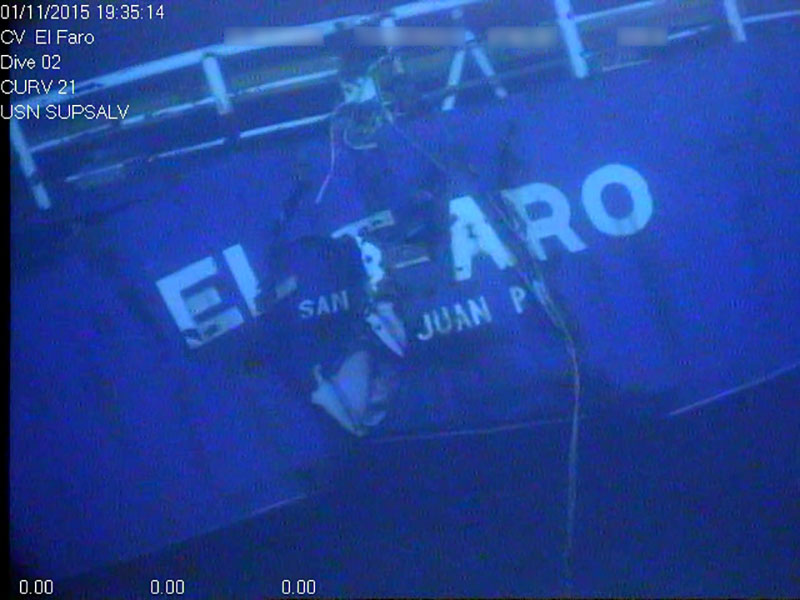Congress has ordered a sweeping package of maritime safety reforms, three years after the 790’ containership El Faro sank in Hurricane Joaquin with all 33 on board.
Congress passed the legislation, a few days before the third anniversary of the Oct. 1, 2015, disaster. In the crew’s homeport of Jacksonville, Fla., where a city park was renamed to honor the crew in 2016, the mayor and city council declared Monday “El Faro 33 Memorial Day.”
The Congressional action awaiting President Trump’s signature directs the Coast Guard to develop updated safety requirements for U.S.-flag ships, in line with recommendations from Coast Guard and National Transportation Safety Board experts.
Those recommendations included setting new standards, like mandating enclosed lifeboats that older vessels like the 1970s-vintage El Faro were exempt from. Other policy changes would reform standards for ventilators, hull and deck openings, and stability, all factors cited in NTSB and Coast Guard investigation findings.
“The families of the El Faro crew deserve much of the credit for getting many of these potentially lifesaving measures through Congress,” said Sen. Bill Nelson, D-Fla., a co-sponsor of the legislation.
But investigators found there were serious deficiencies in the ship, and that previous inspections and surveys had failed to uncover them. The legislation sets the Coast Guard to change on how it conducts oversight of third-party organizations that conduct vessel surveys and inspections.
Investigators also faulted Tote Maritime’s SMS and safety training for crews. The legislation calls for the Coast Guard to test a new anonymous safety alert system, a channel for crewmembers to confidentially contact the Coast Guard when they see an urgent safety issue.
A Coast Guard marine board of inquiry convened in El Faro’s homeport, Jacksonville, heard testimony about how Davidson was handicapped by outdated weather information that was up to 12 hours old and could not see how Joaquin was building to a category 4 hurricane. The legislation will have the Coast Guard and National Oceanic and Atmospheric Administration develop new ways to get updated, timely and detailed storm reports to ships.
New emergency sensors and distress signaling technology are to be developed, including high-water alarms, bridge monitoring of hull and deck hatches and openings, and redesigned voyage data recorders that can float free in a sinking and carry emergency position indication radio beacons (EPIRBs).





